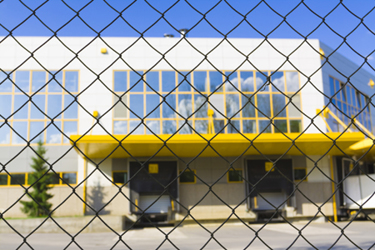CDMOs Still Limiting Access: COVID Or Convenience?

By Louis Garguilo, Chief Editor, Outsourced Pharma

Kelly Creighton, Executive Vice President, Head of CMC, Citius Pharmaceuticals, Inc., likes to stay close – really close – to the multiple CDMOs that comprise his organization’s outsourcing strategy.
“Prior to COVID, I was on site at our CDMOs once a month. We were constantly going onsite,” he says during a recent conversation. “That was a better way to manage the relationships – sit in a room with folks at the CDMO to talk about what's going on, and to be able to troubleshoot. We’ve always felt that is more efficient than trying to do it virtually.”
Understandably, and of necessity, COVID put a stop to those visits. However, in the post-COVID-peak era, some CDMOs continue to enforce a policy that limits customer access. Have professionals – perhaps on both sides of the outsourcing table – become overly comfortable with working together virtually?
Some may have, but not Creighton. “We are starting to see CDMO doors open back up, and people wanting to have those face-to-face interactions again,” he says. “but we're still not seeing that frequency we’d like.”
The Door’s Half Open

To handle all this activity and complexity, Creighton says, “We work with two API/drug-substance CDMOs that do custom manufacturing for us; four additional CDMOs that sell us APIs covered under DMFs [drug master files], so we don't actively manage them; and four drug-product CDMOs we also work closely with. These range from small molecule to biologics and cell therapy.”
Creighton has learned over a long career – including previously working at a service provider (Covance) and consultancy (CBR International) – that better CDMO relationships are formed, “when we meet at their facilities.”
At Citius, it’s a 10 CDMO to 2 CMC professional ratio. (The company also draws expertise from external consultants when needed.) Because of this lean structure, coupled with a hands-on approach, the CDMOs that Citius selects are primarily in the U.S., or in Europe as specific programs dictate.
“It’s a model we've always used. We've wanted to stay in the U.S. if possible,” he explains. (Citius is in Cranford, New Jersey.) “It allows better oversight, specifically for our early phase programs – and provides more access to the facility.”
Or at least it did.
Now he has fingers crossed the world gets through these approaching winter months without serious COVID outbreaks. “People are still a little anxious,” he says. “While we’ve seen CDMOs allowing customers to come on site, even now they're still trying to limit those visits unless they feel they’re absolutely necessary.”
And the CDMO’s definition of necessary may not be Creighton’s. “They're not back to the open-door policy we were accustomed to, when we could say, ‘We're going to be there next Tuesday,’ and they would reply, ‘Okay we'll have everything ready for you.’
“Now it takes a lot more planning for fewer visits,” he says.
No See No Go
I’m not suggesting anything nefarious here, I say to Creighton, but we can ask whether this continuing stringent policy regarding customer visits is actually still wrapped tightly around COVID.
“I do think there is some leveraging of that, right?” he says with a laugh.
“Obviously, it takes a lot of effort for CDMOs to host folks onsite. We understand it can be disruptive; we are always cognizant of that when we ask for visits. But I do think in many cases they continue to leverage the recent situation to limit the amount of folks they have coming on site.”
CDMOs – quite remarkably, most sponsors I’ve talked to say – improved their “virtual” virtuosity, allowing for live video tours and inspections, etc., during COVID. It’s not difficult to understand they’d like to continue to employ that means – perhaps more than their customers at times.
Nonetheless, would the continuation of a site-limitation policy have Creighton and company thinking twice about the CDMOs they are working with, and looking around more earnestly for alternatives?
“Again, we understand where the CDMOs are coming from,” he begins his diplomatic reply, “but there are times it is frustrating with regards to not having the access we were accustomed to prior to COVID.”
“There are times we start thinking perhaps we should look at different partners. ”
Although rare in occurrence, Creighton says particularly at the bigger CDMOs “there are some days it can feel like they're doing us a favor by working with us.”
“But we're still the customer, and that’s the attitude we expect from them. We're not afraid to move things around if we must. We have changed CDMOs on multiple fronts because we didn't feel we were getting the service, and the level of expertise, we needed for our program. I think it’s important for sponsors to always keep that in mind.”
To be clear, Creighton is certainly not making light of switching providers. He works tirelessly at maintaining long-term relationships so he does not have to. He also recognizes, for example, there may be fewer options on the biologics side of the business, where he says, “the CDMO space is still extremely tight, and you may not have a whole lot of opportunities to just move programs around.”
Which brings us back to the overall importance of communication, and those on-site, face-to-face meetings.
“You have to manage all your external relationships closely,” Creighton concludes, “but my advice to others is, at the same time, you should always have an eye open for options.”
“If you don't feel you’re getting the level of service you need, and you find opportunities for improvement elsewhere, then consider it carefully, but don’t be afraid to move things around, especially when it is easier with your early-phase programs.”
And make sure your new partners understand you’ll be around to see them.
